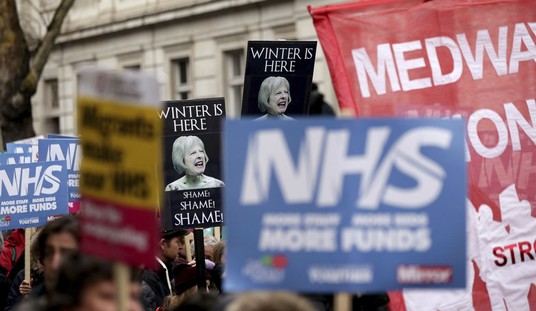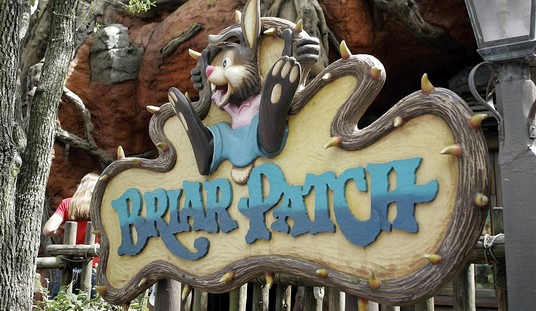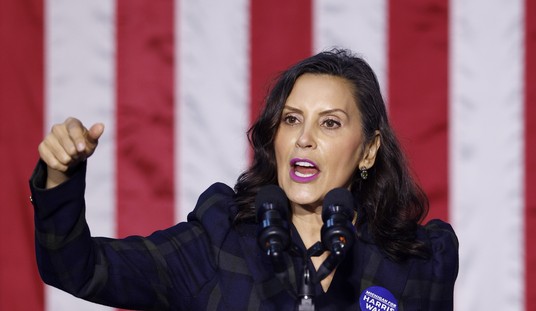Economic growth continued in the US to close out the second quarter, boosting employment while wages still lag. The US jobs market performed better than expected in June, adding 213,000 jobs during the month and beating market guesses on the expansion. The Bureau of Labor Statistics’ Household survey continued to show problems in their data collection, however, leading to more wild swings in labor-force numbers:
Total nonfarm payroll employment increased by 213,000 in June, and the unemployment rate rose to 4.0 percent, the U.S. Bureau of Labor Statistics reported today. Job growth occurred in professional and business services, manufacturing, and health care, while retail trade lost jobs. …
Total nonfarm payroll employment increased by 213,000 in June and has grown by 2.4 million over the last 12 months. Over the month, job gains occurred in professional and business services, manufacturing, and health care, while employment in retail trade declined. (See table B-1.)
Employment in professional and business services increased by 50,000 in June and has risen by 521,000 over the year.
Manufacturing added 36,000 jobs in June. Durable goods manufacturing accounted for nearly all of the increase, including job gains in fabricated metal products (+7,000), computer and electronic products (+5,000), and primary metals (+3,000). Motor vehicles and parts also added jobs over the month (+12,000), after declining by 8,000 in May. Over the past year, manufacturing has added 285,000 jobs.
In more good news, the revisions from the last month were all to the upside. BLS added 16,000 jobs to April’s projections and 21,000 to the May report. That puts the three-month rolling average at 211,000 jobs added per month, almost exactly equating this month’s report. The job expansion this year remains steady, although not exactly spectacular. However, annual wage growth remains slower than what would be expected if the market was really reaching full employment.
On that note, the unemployment rate rose despite the job additions, thanks to yet more odd numbers from the Household survey. The number of people in the civilian workforce leaped up 601,000 from the previous month, while the number of people not in the workforce dropped sharply by 413,000. At the same time, however, the number of unemployed rose by 499,000. Either we just had a flood of people back into the workforce, or more likely, BLS needs to do some serious work on its survey techniques.
Even with all the fluctuations, the participation rates showed some improvement. The workforce participation rate ticked up two-tenths to 62.9%. That’s still slightly lower than the 63.0% in February and well below the post-Great Recession rate of 65.7%, and it’s near the post-Great Recession bottom of 62.6%, but at least it moved in the right direction even with all of the data instability on workforce calculations. However, the employment-population ratio remained at the post-Great Recession high of 60.4%.
All of this calls into question whether the “full employment” mantra we keep hearing is actually true. Wages have not gone up sharply enough to credit that, even though some employers insist that they’re not able to fill jobs at this point. CNBC wonders about it, too:
US economy adds 213,000 jobs in June from CNBC.
Nonfarm payrolls rose 213,000 in June and the unemployment rate was 4 percent, according to a government report Friday.
Economists surveyed by Reuters had expected a gain of 195,000 and the jobless rate to hold steady at 3.8 percent, which had been tied for the lowest since 1969.
In addition to the payroll gains, average hourly earnings rose 2.7 percent year over year, a bit below expectations of a 2.8 percent increase.
Despite increasing talk about the economy being near full employment, hiring continues to grow. Along with June’s upside surprise, the Bureau of Labor Statistics revised April’s count up from 159,000 to 175,000 and May’s from 223,000 to 244,000, a total of 37,000 more than initially stated.
The AP’s Josh Boak called it a sign of confidence despite rising trade tensions:
The Labor Department said Friday that the unemployment rate rose to 4.0 percent from 3.8 percent as more people began looking for work and not all of them found it.
On the same day that the Trump administration began imposing tariffs on $34 billion in Chinese imports and China retaliated with their own tariffs, the job gain showed that the 9-year old U.S. economic expansion — the second-longest on record — remains on solid ground.
Average hourly pay rose just 2.7 percent from a year earlier. The low jobless rate has yet to force employers to offer higher wages in order to fill job openings.
Slow wage growth either suggests that the job openings aren’t mission critical or that there’s more competition for jobs than the toplines from these reports suggest. The seasonally adjusted Not In Labor Force numbers might explain why. From January 2000 to January 2008, at the beginning of what would become the Great Recession, we added 11 million people to that metric. Between January 2008 and January 2010, we added almost 5 million — nearly half as much as the previous eight years — as people bailed out of the collapsing economy. Since January 2010, we’ve added 12 million more. The lack of growth on wages strongly indicates some kind of labor overhang, viable workers who are still outside the system looking for an opportunity and depressing competition for wages. Boak’s take on this might be the closest to reality.
At any rate, the report is good news for the administration as the trade war begins, but they’d better enjoy it while they can. If this momentum stalls before the election because of these trade actions, it might be a very bleak midterm cycle at the White House.
Update: Henry Olsen at EPPC gets right at the problem:
3) The best measure of labor market health, the Employment-to-Population-Ratio, is still over 2% below pre-08 levels and over 4% below its all-time 1999 high. https://t.co/we3b2bg3U8 4) Some of that is due to aging, but the EPR for people 25-54 years old is also down. 2/x
— Henry Olsen (@henryolsenEPPC) July 6, 2018
6) Since there are about 126 million 25-54 year olds, that means we need to create another 1.3-2 million jobs above trend just to return the labor market to full employment status. https://t.co/YVE9Tnu3Sq 4/x
— Henry Olsen (@henryolsenEPPC) July 6, 2018
This is why wage growth has been largely stagnant despite insistence on describing the job market as “full employment” or nearly so. It’s not, and it’s actually not all that close to it. What we’re seeing is older workers hanging onto jobs rather than retiring and younger workers locked out of the job market.








Join the conversation as a VIP Member